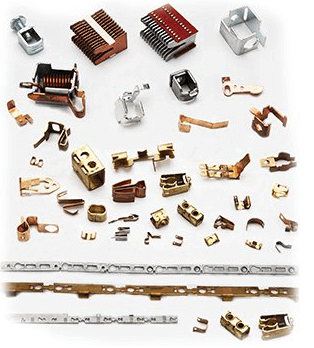BETTER TOUCH BETTER BUSINESS
Contact Sales at Vowin.
To understand the role of electronics metal stamping in electronic component manufacturing, it is essential to delve into the intricate processes involved. Electronics metal stamping is a vital manufacturing method that facilitates the production of high-quality and durable electronic components. This article aims to explore the significance of metal stamping and its various applications within the realm of electronic component manufacturing.
The Basics of Electronics Metal Stamping
Electronics metal stamping is a technique that involves the use of specialized machines and dies to transform flat metal sheets into desired electronic components. This process utilizes immense pressure to shape the metal sheets, resulting in precise and intricate designs. Different metals, such as aluminum, stainless steel, and copper alloys, are commonly used in electronics metal stamping, each offering unique properties and advantages.
One of the primary benefits of electronics metal stamping is its ability to create complex and intricate designs with high precision. The machines used in metal stamping are equipped with advanced control systems and computer numerical control (CNC) capabilities, ensuring accuracy and repeatability during the production process. This precision allows manufacturers to meet stringent design requirements and produce intricate electronic components used in various industries.
The Applications of Metal Stamping in Electronic Component Manufacturing
Metal stamping plays a crucial role in the manufacturing of electronic components across diverse industries. Let's explore some key applications where electronics metal stamping proves its worth:
1. Circuit Connectors
Circuit connectors are essential components that facilitate electrical connections within electronic devices. Electronics stamping enables the creation of connectors with intricate designs and specified tolerances. These connectors ensure reliable power transfer and signal transmission between different parts of an electronic system. By using metal stamping, manufacturers can produce circuit connectors in large quantities while maintaining their durability and functionality.

2. Heat Sinks
Heat sinks are vital in electronic devices to dissipate excess heat generated by the components. Metal stamping allows manufacturers to fabricate heat sinks with optimized shapes and designs for efficient heat dissipation. With precision stamping techniques, complex fins and grooves can be created on the heat sinks, maximizing their surface area and thus, enhancing their cooling capabilities. The use of metal stamping also enables cost-effective production of heat sinks in large quantities.
3. Battery Contacts
Battery contacts are essential components used in electronic devices that rely on battery power. These contacts ensure a secure and stable connection between batteries and the devices they power. Electronics metal stamping enables the production of battery contacts with complex geometries and precise dimensions to achieve compatibility with various battery types. The high accuracy offered by metal stamping ensures optimal electrical conductivity and long-lasting performance of battery contacts.
4. Shielding Components
Shielding components are crucial to protect electronic devices from electromagnetic interference (EMI). Metal stamping allows the creation of intricate shielding components that fit precisely within electronic devices and prevent external electromagnetic signals from interfering with their operation. By employing metal stamping techniques, manufacturers can produce shielding components with tight tolerances, ensuring effective EMI shielding and enhancing the overall reliability of electronic devices.
5. Terminal Pins
Terminal pins are vital components used in connectors, switches, and various electronic interfaces. These pins provide secure electrical connections and enable the transfer of signals and power. Electronics stamping enables the production of terminal pins with precise shapes, sizes, and tolerances, ensuring compatibility with different electronic devices. The high-quality terminal pins manufactured through metal stamping ensure reliable connectivity and robust performance.
Conclusion
Electronics metal stamping plays a critical role in the manufacturing of electronic components, offering precision, durability, and cost-effective production. By using metal stamping techniques, manufacturers can create complex designs, maintain tight tolerances, and produce components in large quantities. The applications of metal stamping in electronic component manufacturing are vast, ranging from circuit connectors and heat sinks to shielding components and terminal pins. The versatility and efficiency provided by stamped steel components for electronics are instrumental in meeting the demands of the rapidly advancing metal stampings for electronics industry, ensuring the production of high-quality and reliable electronic devices.
Copyright © 2025 ShenZhen City Vowin Technology Co., Ltd. | All Rights Reserved Design